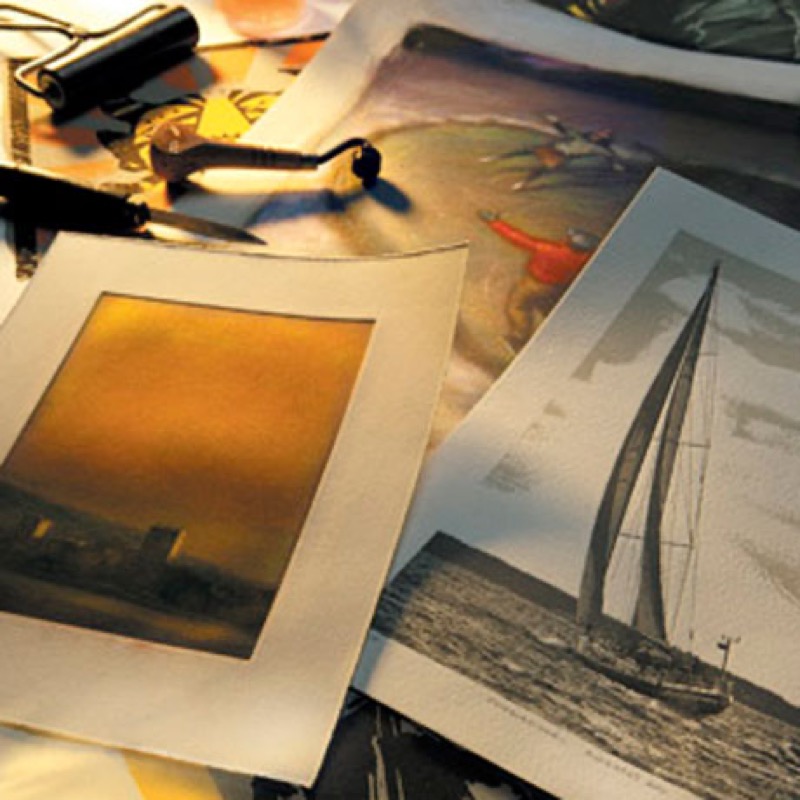The production of prints or the creation of an artist's book requires, above all, paper with the proper specifications.
1. The principal characteristics of papers for printmaking
- Manufacture
Most papers for use in printmaking are manufactured in the traditional way, in rolls. Of 100% cotton or with a high percentage of this natural material, they are assembled without acid and are available with an alkaline base to guarantee a maximum life.
- Color
The classic papers are traditionally white, whether natural or not. Some types are also now offered in various neutral shades: vanilla, light ocher, grey and even black.
- Weight
A description of the thickness of the paper and expressed in grams per square meter. Print makers prefer products with a good "hand," meaning a weight between 200 and 300 g/m² and sufficiently thick.
- Size
Various sizes are available, from 50 x 65 cm (Raisin size) or 56 x 76 cm (Jesus)... up to 120 x 160 cm. Note: books are printed on large-format sheets, folded and cut to form a "notebook."
- Texture
Most papers used in printmaking are smooth or with a fine texture. Some have a different texture on each face.
To summarize...
A paper for printmaking must be very resistant. For this reason, it is also characterized by:
- Surface finish: to accept the print.
- Compression strength: to withstand the press.
- Resistance to time (the conservation norm ISO 9706 being the required standard).
- Resistance to moisture (during engraving, the paper is submerged in water for about an hour to render it soft).

2. Which paper for what purpose?
- Intaglio or relief engraving
- Line engraving: "edition," "engraving" or vellum papers. Acid-based techniques (such as etching) require a product devoid of wood fibers.
- Flat-bed printing
- Lithography: various vellum, specialized engraving paper.
- Screen printing: paper manufactured without glues and which easily absorbs ink.
- Binding: Laid-finish paper ...
Don't forget the indispensable neutral blotting paper for drying prints.
Recommended product:
Edition
See also :
Printmaking
Basic tools for engraving
